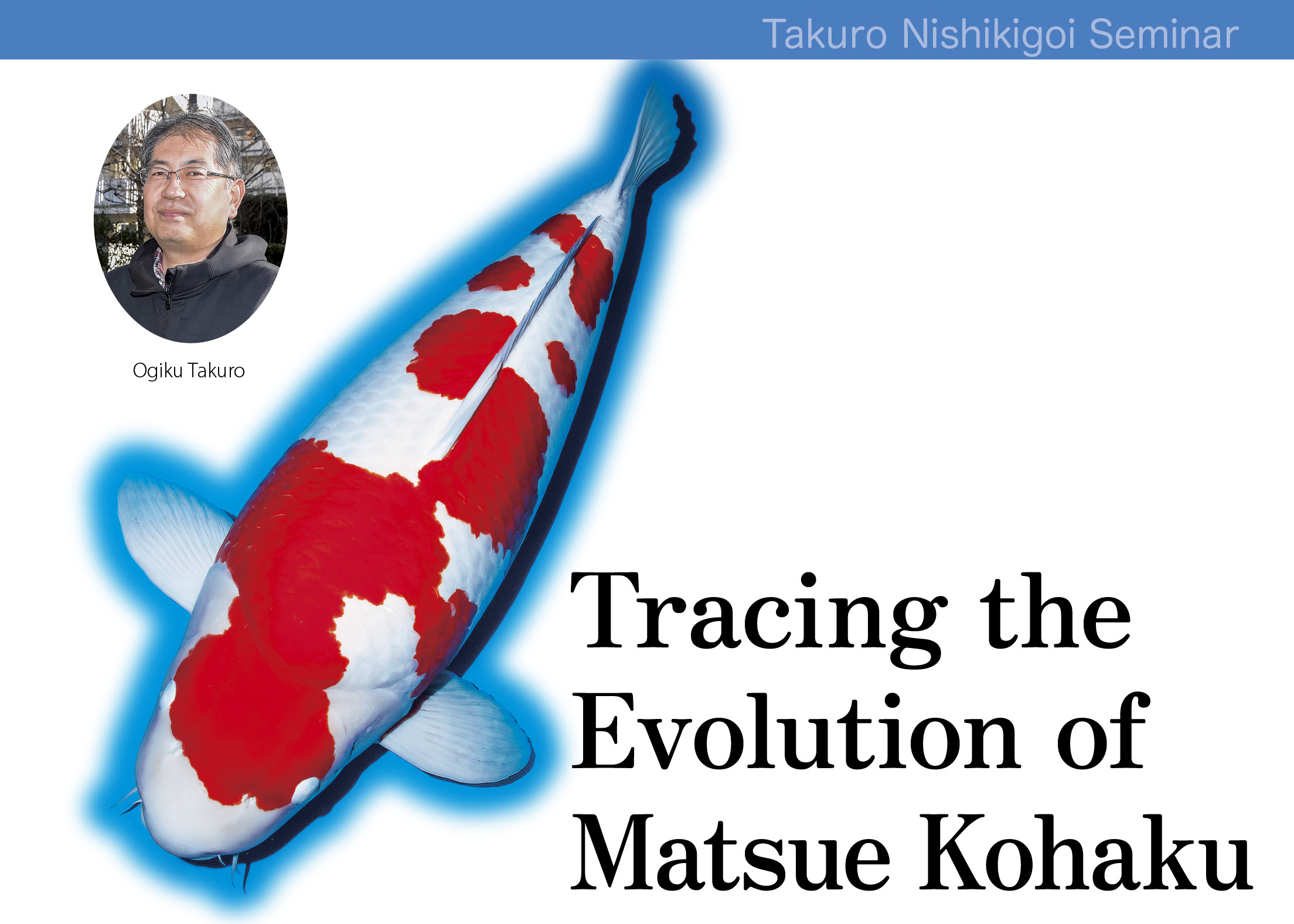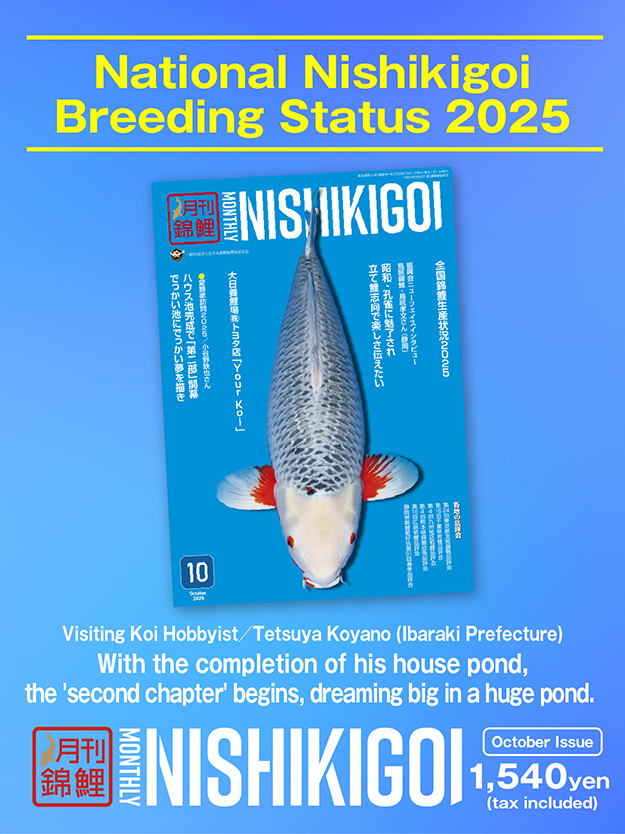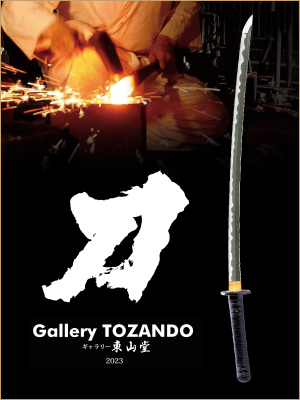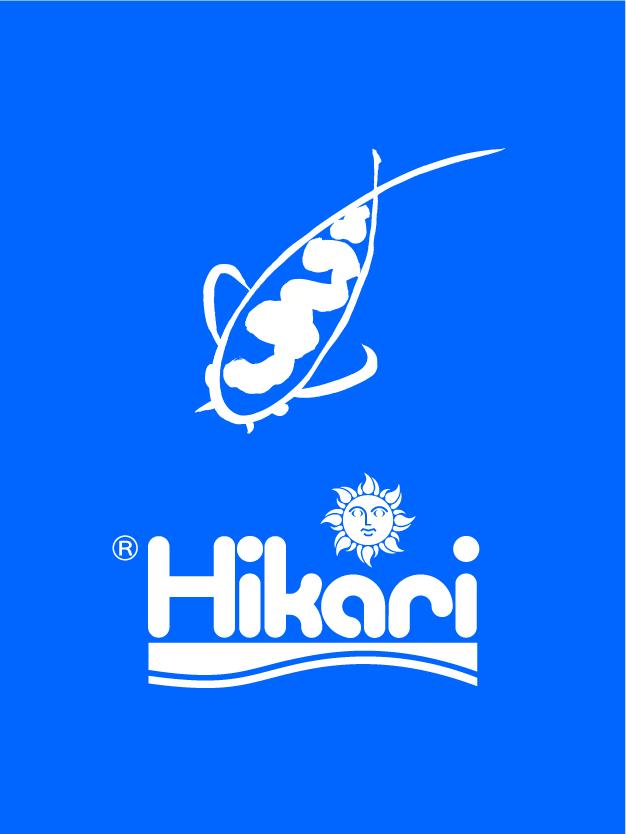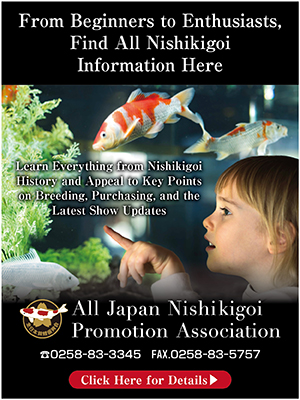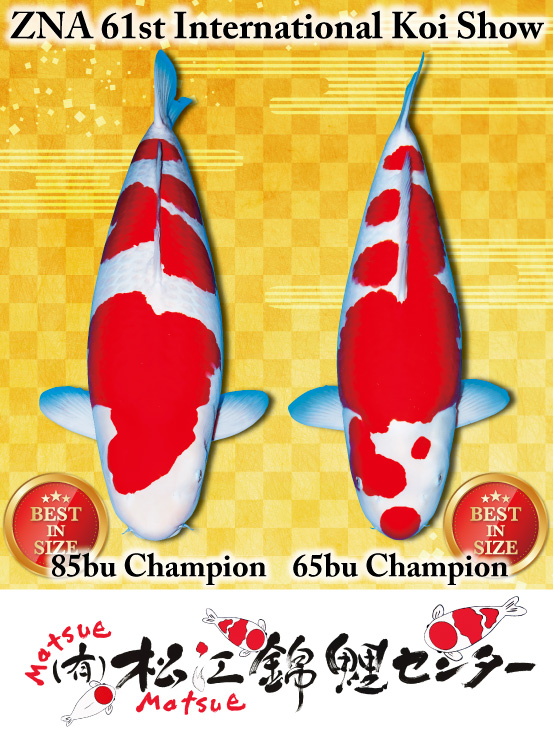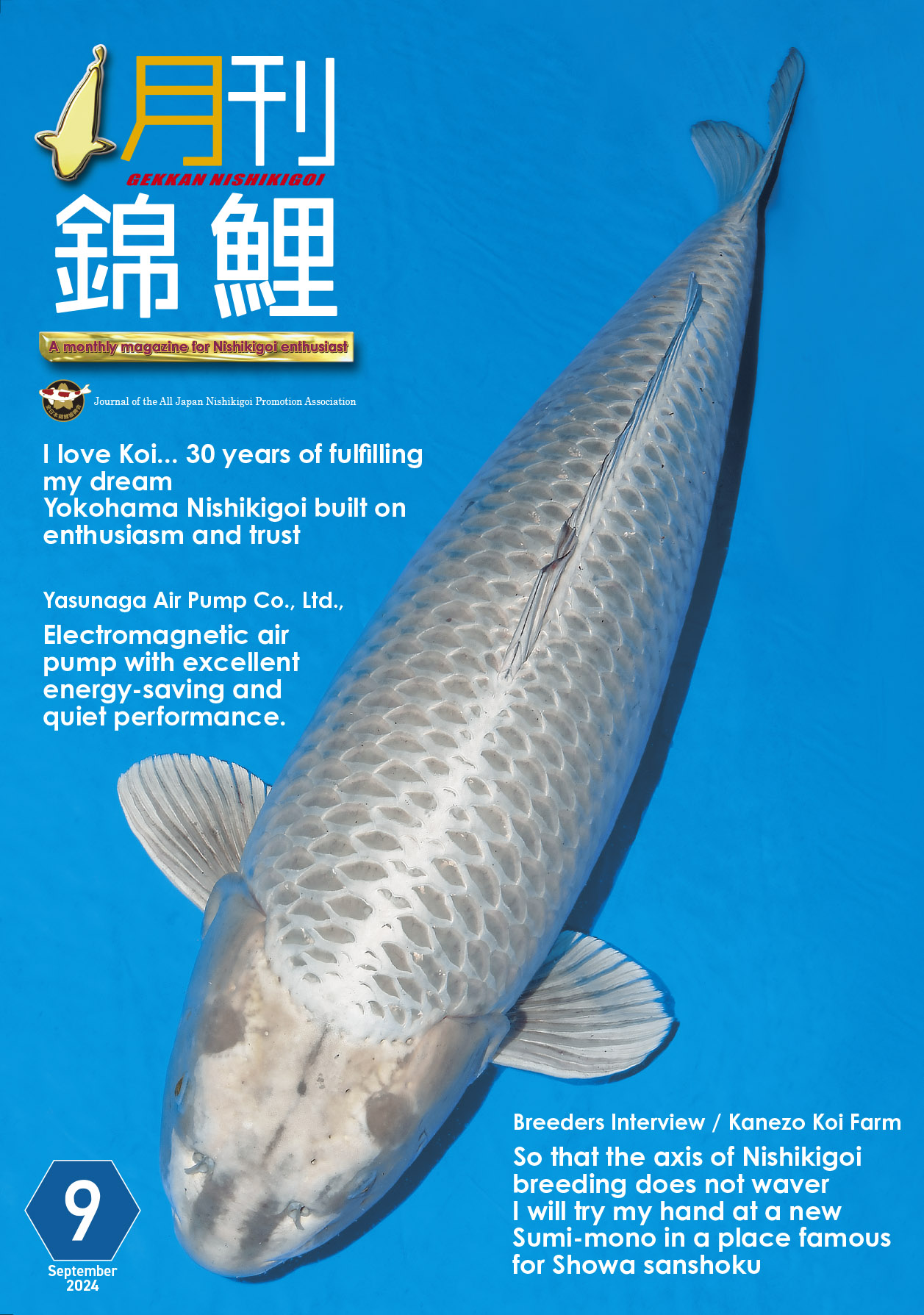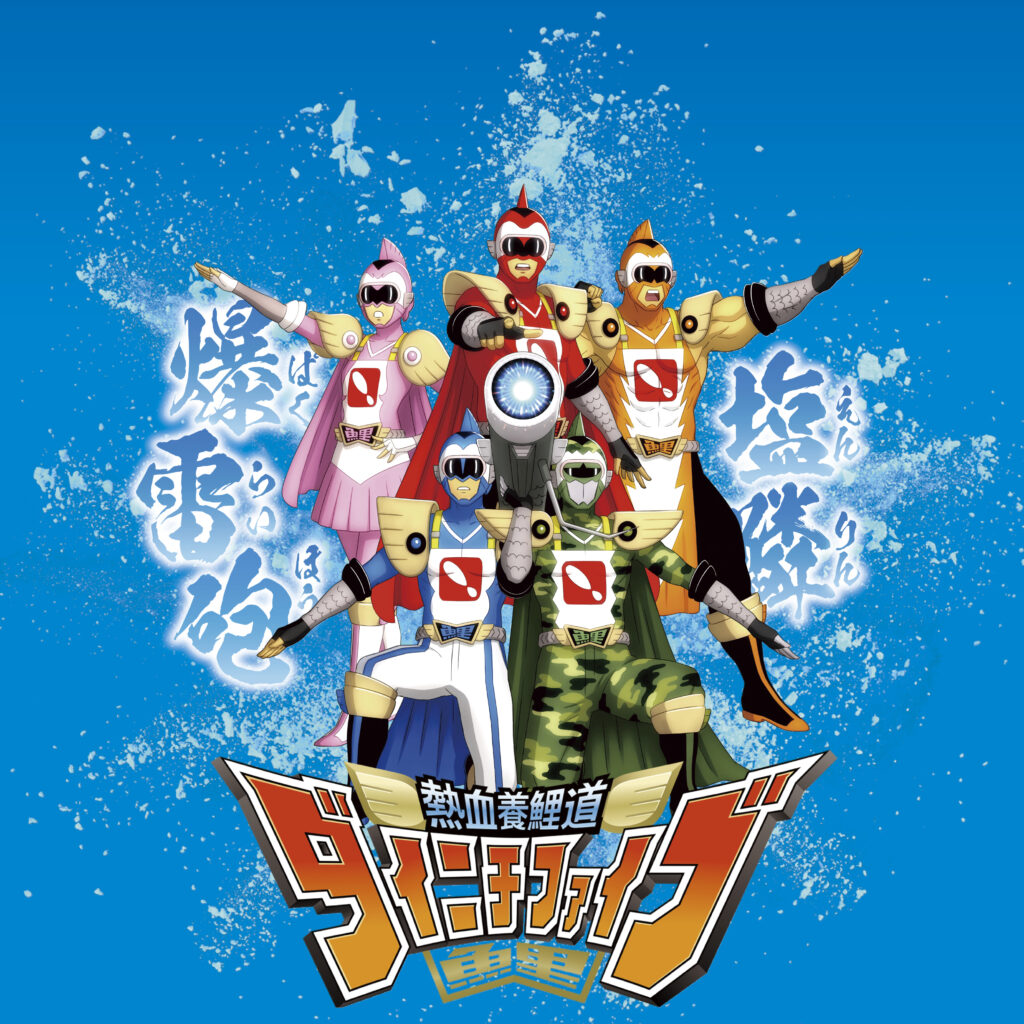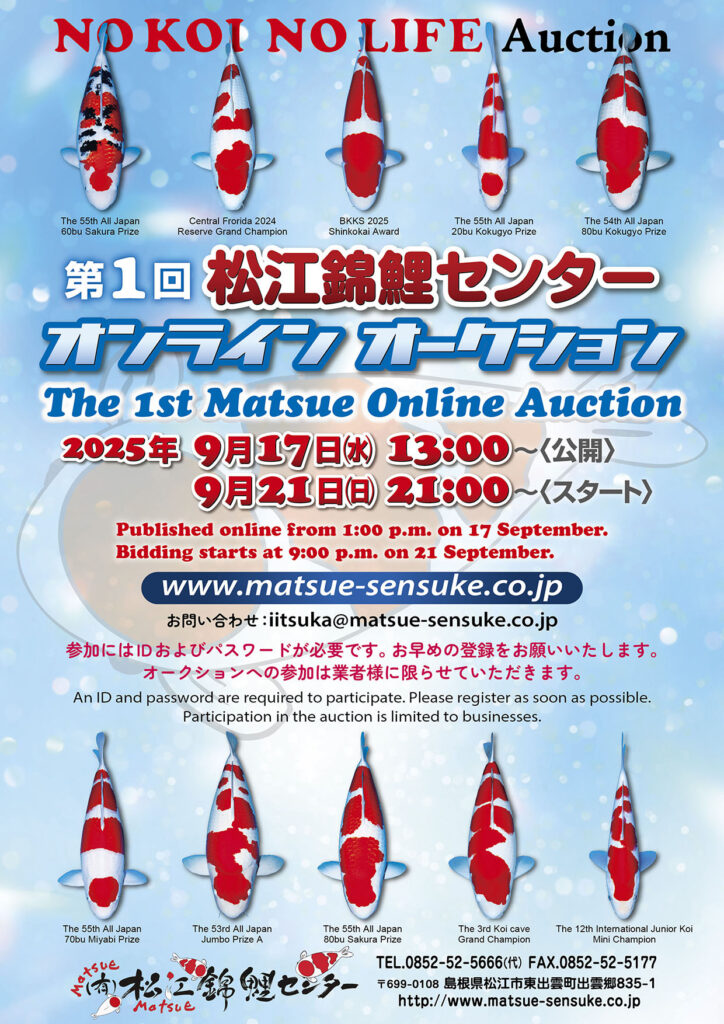I saw this one at an exhibition in Matsue Nishikigoi Centre and thought it would develop well, so I bought it first. One of our customers purchased it, and by the time it was two years old, it looked like this (⑯―B), measuring 39 cm. At that time, it was entered in the Kanto-Koshin Nishikigoi Show (2021), and it won the overall first prize in the 40bu category. After another year of raising, at four years it reached 68 cm (⑯―C), and now at five years it has grown to 71 cm (⑯―D). Until the previous year, the back half of the koi was a little thin, but after one year in the mud pond, it filled out and developed a solid, impressive body.
⑯/Offspring of Midori




―Next, let’s look at the development of a koi from the parent Ayame. These are rare, so they don’t appear on the market very often. In particular, this koi was a treasured one kept by Hiroaki (⑰―A), but I managed to get it from him (laughs). The photo shows it at two years old, with a sleek, slender body. It is now three years old in our pond, (⑰―B), measuring 70 cm, so it has grown 10 cm in one year.
⑰/Offspring of Ayame


Another offspring of Ayame was also purchased at the age of two (⑱―A). At that time, it was a slightly slender koi.
Hiroaki: I remember this one well.
―This koi was a little different from the others, so I thought it was interesting and decided to buy it. By the time it turned three, the beni had settled nicely (⑱―B). Then, at four years old, it measured 77 cm (⑱―C). What kind of lineage does Ayame come from?
Hiroaki: The female is from the Dainichi lineage. In this case, the cross was primarily aimed at producing future parent koi, so we didn’t release many offspring.
―I see. That’s why they’re not seen much in public.
⑱/Offspring of Ayame



―Hakuto(⑲) is currently one of the main bloodlines of Matsue Kohaku. How big is it now?
Hiroaki: I haven’t been raising it that intensively, so it’s about 85–86 cm. It hasn’t reached 90.
―Why did you decide to use this koi as a parent?
Hiroaki: When it came out of the mud pond, its body presence and shiroji were excellent. But at the same time, I did wonder about the beni, since it looked a little dry. From the time I started using Hakuto as a parent, I began to feel that it might be more effective to use females that were a step below the very top tier. That’s why, at first glance, people might say, “This is a parent koi?” However, I believe that parents don’t necessarily need to be flashy. Hakuto was one of those koi I deliberately “lowered the bar” with and tried as a parent. The offspring turned out to be completely different from what we had seen up to that point, marking a turning point for Matsue’s approach. Many of its offspring are now reaching nearly 90 cm by the age of five, so I believe it wasn’t the wrong choice.
―I have seen many koi from Matsue Nishikigoi Centre over the years, and I think the offspring of Hakuto are the most consistent. How many years have you been spawning Hakuto?
Hiroaki: The oldest is now six years old.
―Breeders often say they want to use offspring from “lucky spawns” as future parents, don’t they?
Hiroaki: That’s right. The main reason is to increase the probability of success. If the parent has already produced good results, then you can expect the offspring to perform as well. The real issue is which male to pair with it. The idea that simply crossing two excellent koi will produce excellent offspring—I have completely abandoned that way of thinking. My approach now is that as long as everything comes together to make a total of 100, that’s what matters. It ultimately comes down to intuition.
⑲/「Hakuto」
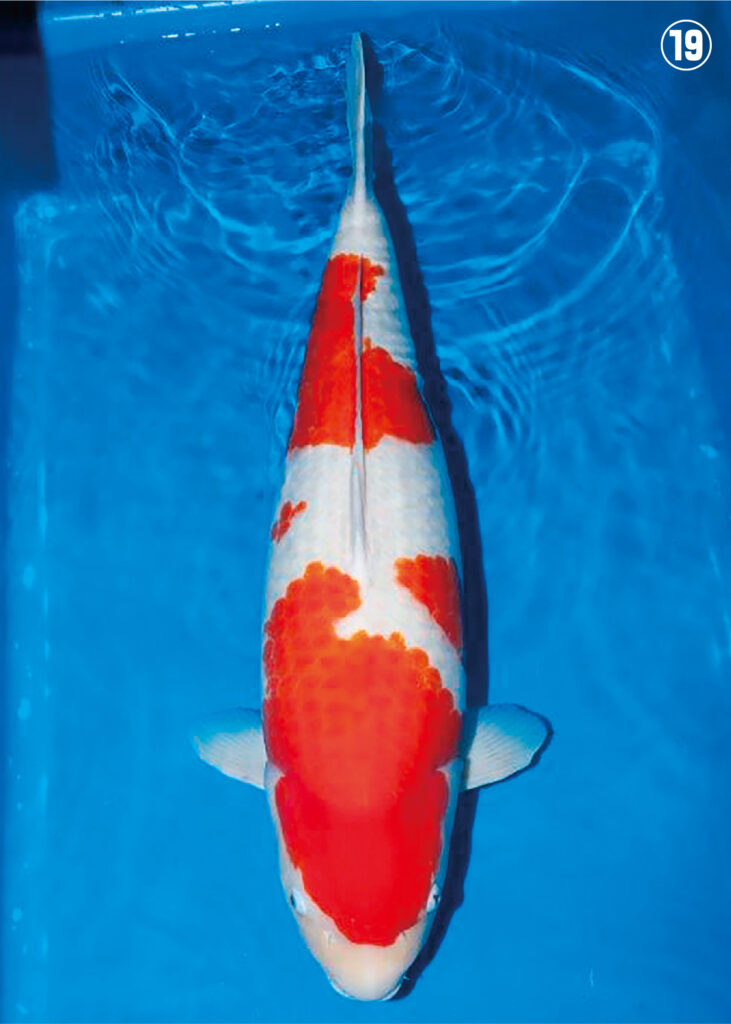
―That’s where the breeder’s skill really comes into play. So then, let’s take a look at what kind of offspring Hakuto has produced. Here is one at two years old, measuring 60 cm (⑳―A). At this stage, it was a little on the slender side for a Hakuto offspring. By three years old, it had reached 69 cm (⑳―B), with the beni becoming much more established, and both the kiwa and sashi tightening up. By the age of four, it had gained considerable body width (⑳―C). I believe koi should develop width as they grow larger, rather than having it too early, so I don’t worry much about the sense of volume at two years of age.
⑳/Offspring of Hakuto



This koi is also in our pond. Here it is at two years old (㉑―A). Because of its complex pattern, the leading edge of the sashi was not yet clearly defined. However, by the age of three, it had settled down quite a bit (㉑―B). I think that with about another year of keeping, the kiwa will become much more refined.
㉑/Offspring of Hakuto


Here’s another offspring of Hakuto, 60 cm in the autumn of its second year (㉒―A). The koi was truly excellent, and I had to beg Hiroaki to let me buy it practically. By its third year, it had reached 71 cm (㉒―B). Since Hakuto’s offspring grow so steadily like this, I believe it is fitting to call Hakuto one of Matsue’s main parent.
㉒/Offspring of Hakuto



